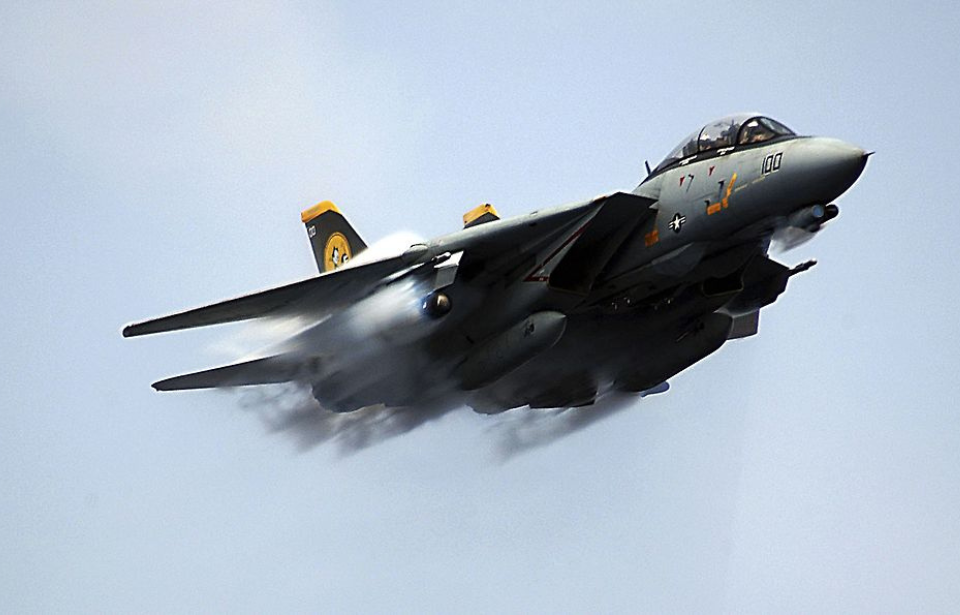The Grumman F-14 Tomcat is one of the most iconic aircraft to ever be operated by the US Navy, with it serving as the primary aircraft for the service’s TOPGUN School. From its first flight in 1970 to its retirement in 2006, the supersonic aircraft served as the Navy’s primary maritime air superiority fighter, tactical aerial reconnaissance platform and fleet defense interceptor – and it all started with the Naval Fighter Experimental (VFX) program.
Naval Fighter Experiment (VFX) program

The F-14 Tomcat’s origin story dates back to the middle of the Cold War, when the US Navy was in the market for an interceptor aircraft capable of protecting carrier battle groups against Soviet anti-ship missiles. This initially resulted in the development of the Douglas F6D Missileer, but its inability to adequately defend itself led to the aircraft’s cancellation in late 1961. This was then followed by the General Dynamics-Grumman F-111B, which also never entered production.
These failed attempts at developing the necessary aircraft led to the Naval Fighter Experiment program, which called for the following requirements:
- Tandem two-seater, twin-engine aircraft capable of air-to-air combat.
- Ability to reach speeds of Mach 2.2.
- Built-in M61 Vulcan cannon.
- Capable of firing either six AIM-54 Phoenix or a combination of four AIM-9 Sidewinder and six AIM-7 Sparrow missiles.
Developing the Grumman F-14 Tomcat
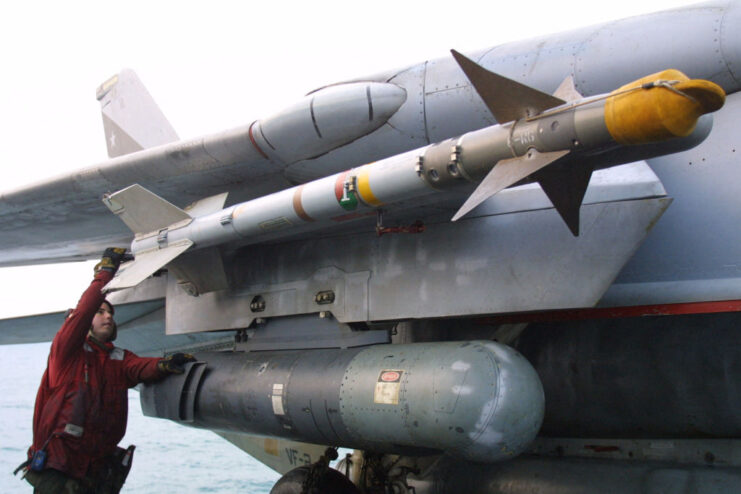
While a number of companies submitted designs, Grumman was the one to win the bid. Given how quickly the US Navy needed the aircraft in the air, the prototype phase was skipped, with the first test flight taking place on December 21, 1970. Just under two years later, missile tests began with the AIM-54 Phoenix. By September 1974, the F-14 Tomcat had officially entered service.
Throughout the design and production process, upgrades and changes were done, with the F-14 becoming the most expensive fighter aircraft of its time. Between 1969-91, 721 units were manufactured.
Grumman F-14 Tomcat specs
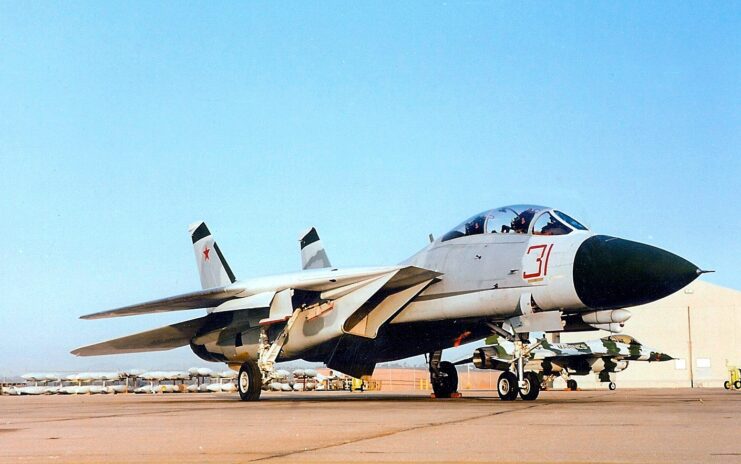
As aforementioned, the F-14 Tomcat was designed to perform more than one task, with the US Navy wanting both a fighter and an interceptor. As such, its design needed to provide the aircraft with these capabilities.
From wing-tip to wing-tip, the F-14 measured 64 feet, with an empty weight of nearly 44,000 pounds and a loaded one of 61,000. Following the “A” variant, it was powered by two General Electric F110-GE-400 afterburning turbofans, which were spaced nine feet apart to allow room for the missile carriage and create a large lifting surface. These engines allowed the aircraft to hit speeds of Mach 2.34 and a range of 1,840 miles.
Operational history with the US Navy
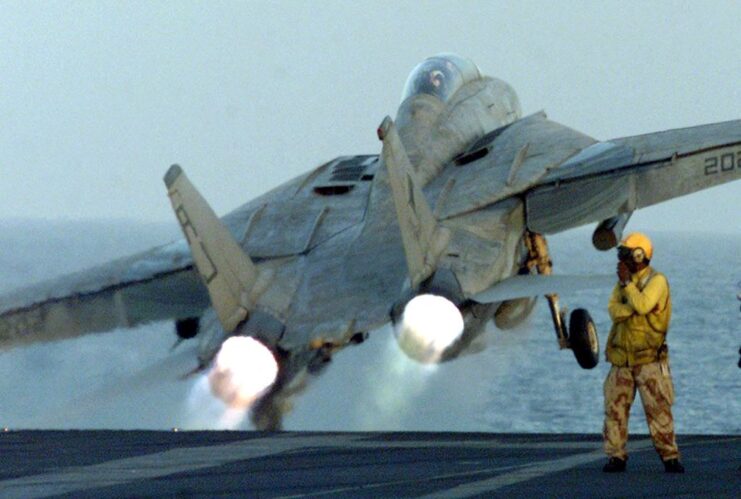
Upon being equipped by the US Navy in 1974, the F-14 Tomcat served as a replacement for the McDonnell Douglas F-4 Phantom II and began its combat service as a photo reconnaissance platform. It participated in Operation Frequent Wind in 1975 and was thrust onto the world stage following the Gulf of Sidra Incident, when two Libyan Sukhoi Su-22 Fitters fired upon the American aircraft in 1981.
Throughout Operation Desert Storm, the F-14 was stationed primarily over the Persian Gulf and the Red Sea, where it served in both reconnaissance and strike escort roles. Fast forward to the start of the War in Afghanistan in 2001, the aircraft was among the first to launch strikes against enemy targets in the Middle East.
Adopted by the Imperial Iranian Air Force
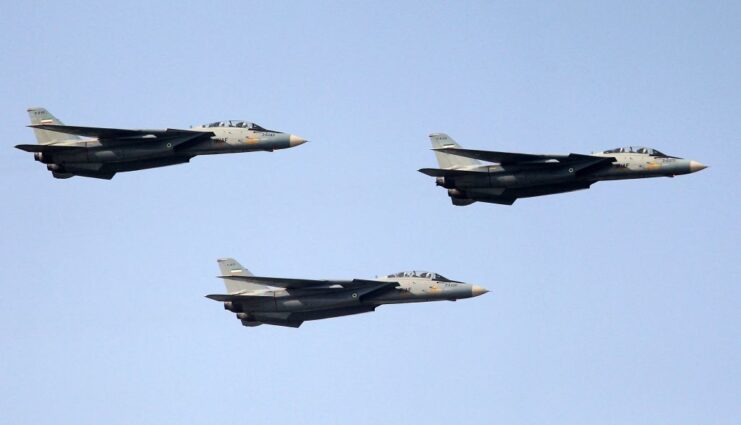
The sole foreign operator of the F-14 Tomcat was the Imperial Iranian Air Force, which adopted the aircraft into service in 1976. However, following the Iranian Revolution, all Western orders were canceled, including those for American aircraft. That being said, the F-14s that had already been delivered were still flown.
Throughout the Iran-Iraq War, the aircraft was manned by the Islamic Republic of Iran Air Force, with pilots scoring 50 air-to-air kills in the first six months of the conflict. Iran claimed that, overall, the F-14 shot down at least 160 Iraqi aircraft.
Top Gun (1986)
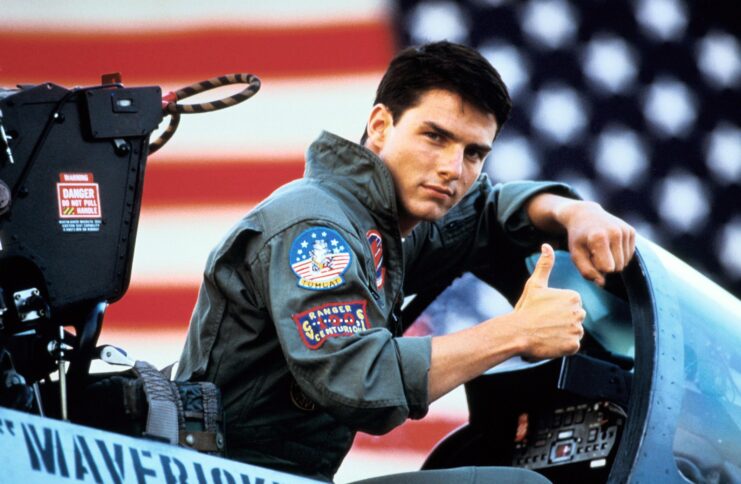
As aforementioned, the F-14 Tomcat was among the aircraft operated by the US Navy’s TOPGUN School, which means it came as no surprise when it made an appearance in the 1986 film, Top Gun, starring Tom Cruise. The actor stars as naval aviator Lt. Pete “Maverick” Mitchell, who’s initially stationed aboard the USS Enterprise (CVN-65) and sent to TOPGUN School, where he flies F-14s.
